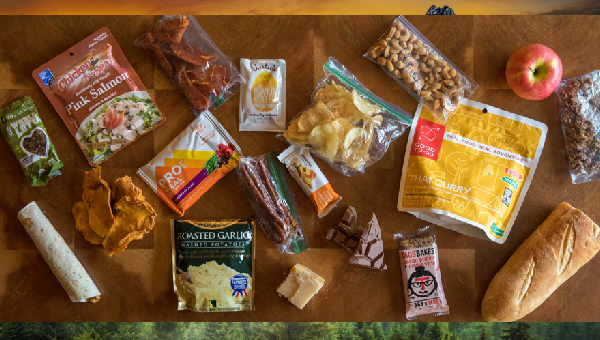Pack Light, Eat Right: Essential Preserved Foods for Journeys

Packaging lightly has always been an art. However, whoever is planning to travel from one state to another, hike in the wild areas or is planning to go on an overseas trip, there is always tension on whether to pack wisely and at the same time ensure that the right foods to eat are included. Millions of preserved foods are a traveler’s best friend as they are convenient, last for a very long time and carry a boost of energy. Here is the list of necessary and tasty preserved foods that will be useful for traveling and do not occupy much space.
The Importance of Preserved Foods for Travelers
Preserved foods are vital for travelers for several reasons:
- Longevity: The preserved foods have a longer life span as compared to the fresh foods and hence they are useful when one is planning for a long journey.
- Convenience: They are portable foods that can easily be carried around in school, work, or other places as they are packed and stored easily.
- Nutrition: Most preserved foods contain vitamins and minerals that are so important in the provision of energy and other factors that ensure good health.
- Weight and Space Efficiency: Many preserved foods are usually lighter and more compact which means you can transport more in the same crammed space.
Types of Preserved Foods
There exists a wide variety of preserved foods and every type comes with the benefit for travelers. Here are some of the most convenient and healthy that you need to take as you are journeying;
Dried-out and Freeze-Dried Nourishments Suggested
Speculation in nourishment incorporates; Got dried out and solidify dried nourishments are simple to carry around as they are light and encompass a longer rack life. They still contain most of their nutrients and are rather convenient to cook. Common options include:
- Fruits and Vegetables: Fruits such as berries, chopped apples and vegetables like carrot sticks may be refilled in water to make them juicy or they may be packed as they are and consumed dry such as freeze-dried fruits.
- Meals: Quick selector meals include pasta, rice and soup where all that is needed is boiling water to reconstitute the freeze-dried meals.
Canned Foods
Canned foods are durable and versatile, offering a wide range of options:
- Proteins: The protein department gets a major lift from canned tuna, chicken, and beans.
- Vegetables: One kind of processed vegetable includes cored vegetables such as corn, peas and tomatoes which can be utilized in more than one dish.
- Meals: Chili, stews, and pasta that are just require a can opener to open them can be some of the meals you can use.
Jerky and Smoked Meats
One of the good sources of protein is jerky and smoked meats which can be consumed raw. Options include:
- Beef Jerky: A popular option that always; contains protein and energy.
- Turkey and Chicken Jerky: Other proteins that are almost as good as beef, but much leaner.
- Smoked Sausages: These can be eaten in this form or they can be incorporated into other meals.
Dried Fruit
One reason why dried fruits are preferred for traveling is that they remain sweet, retain their mineral nutrients and vitamins and can be packed easily once they are dry. It has essential minerals, vitamins, and fiber, it is also lightweight and has a long shelf life for storage. The following are some popular options:
- Raisins, Apricots & Dates: These fruits contain natural sugars that provide quick energy to travelers on lengthy journeys.
- Berries that have been Dried: Some of these berries include cranberries, blueberries and strawberries; they make nutritious snacks when consumed in their dried forms. The dried fruits can be taken on their own, in their trail mixtures, or incorporated into the oatmeal and other meals.
Nuts and Seeds
Nuts and seeds are nutrient-dense and easy to carry:
- Almonds, Walnuts, and Cashews: Very suitable for taking between meals and offer our body healthy fats and protein.
- Sunflower and Pumpkin Seeds: Ideal on a normal working day especially when one wants to grab a quick snack instead of a sit-down meal.
- Trail Mix: It’ll make it easy for you to so that you can come up with a good nutrient combination of nuts, seeds, and dried fruits.
Granola and Energy Bars
These bars are designed to provide sustained energy and are perfect for on-the-go meals:
- Granola Bars: Oats, nuts and dried fruits as the materials most commonly used.
- Energy Bars: Filled up with protein and perceived to trigger physical activities.
Instant Foods
Instant foods are convenient and often only require hot water:
- Instant Noodles, Soups and Oatmeal: A balanced meal that also can be taken in the morning when preparing for the day.
Preserved Food Packing Guide
The most important part of this preservation method is to pack the foods well to enhance their shelf life and ease of use. These are the points that should be considered to have fresh and easily available food during your traveling.
- Portion Control: Food should be wrapped for regular consumption to prevent spoilage and maintain freshness.
- Vacuum Stuffed: In case your nourishment doesn’t come vacuum stuffed, buying an electric sealer can assist you in spare space and amplify the rack life of your nourishment.
- Capacity Holders: Cut capacity holders and utilize resealable sacks to anticipate cross-contamination with other nourishments and anticipate dampness misfortune.
- Organize by Meal: Divide your food according to the different meals, which would make it easier for you to store and plan your daily meals.
Staying Healthy on the Journey
Although preserved foods have several advantages, fresh foods should be used as often as possible, especially fruits and vegetables. Here are a few tips:
- Hydration: Remember always to carry a non-reusable water bottle as it is essential to drink lots of water, especially while eating salty preserved foods.
- Fresh Produce: Incorporation of fruits and vegetables into the meals is recommended particularly if they are fresh.
- Balanced Diet: What you should strive to take is foods with proteins, carbohydrates, fats, and vitamins.
Conclusion
Touring does not reduce the importance of nutrition although one may be forced to carry less food stuff. Thus, by choosing the right kind of preserved foods, people can decide that they have tasty and healthy food with them wherever they are and wherever their journey leads them. Dried and frozen foods, canned foods and beverages, jerkies, nuts and seeds, fruits and granola bars as well as instant products are some of the best travel foods and snacks for a person who wants to avoid cooking on the go but still get to enjoy healthy meals. Before going out, having the right items with you means you can go out without having to think about the next meal. Happy travels!
UP NEXT: Budget Travel Hacks: Seeing the World on a Shoestring








